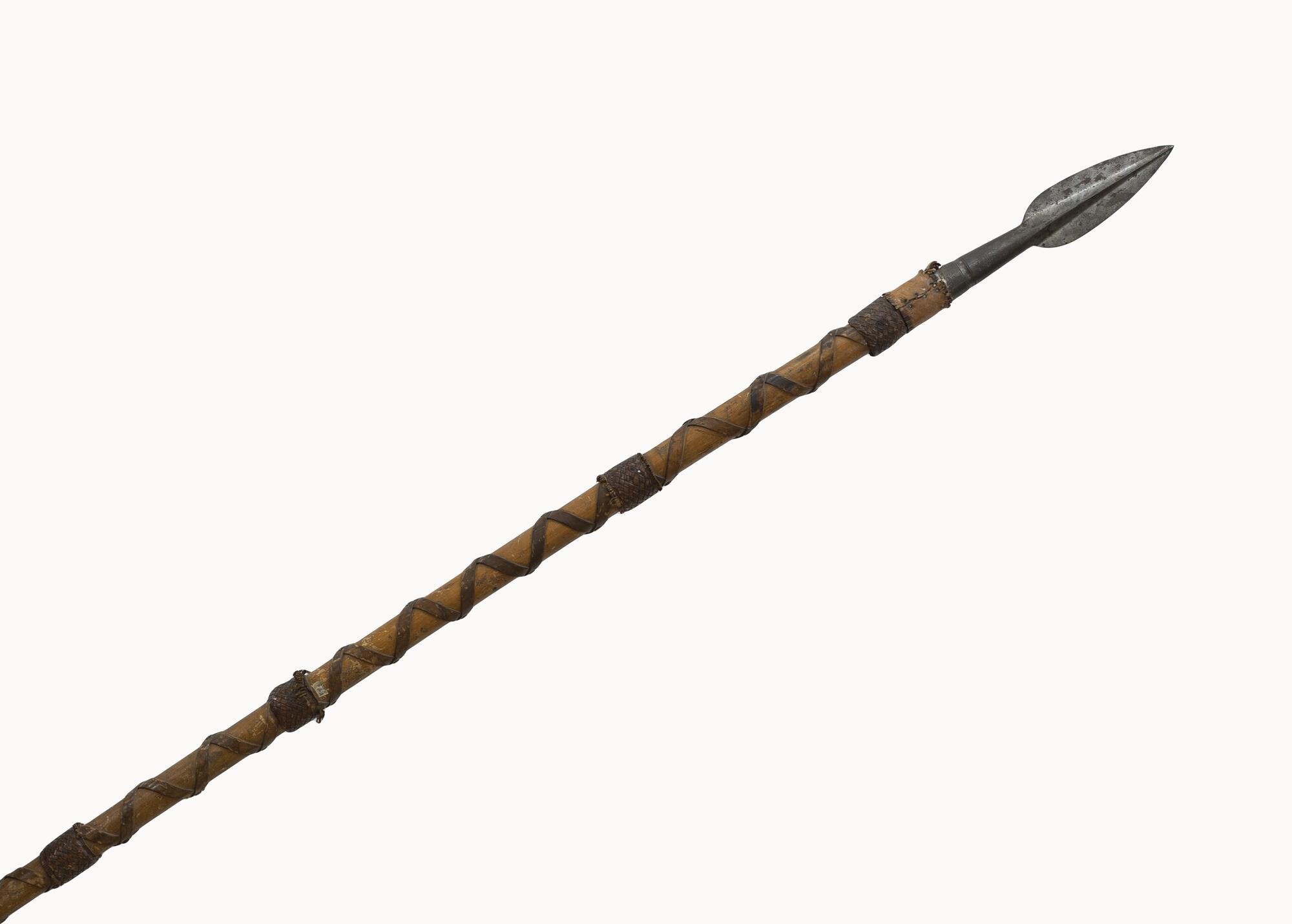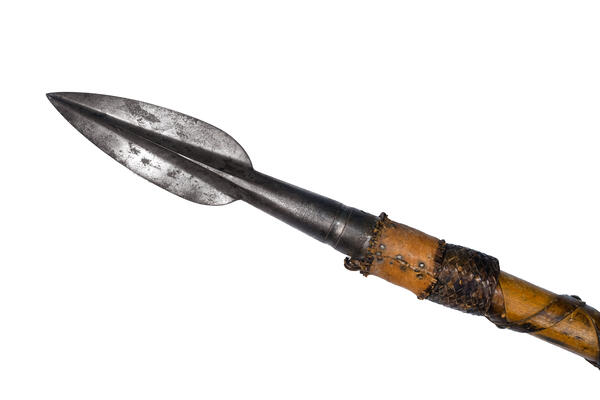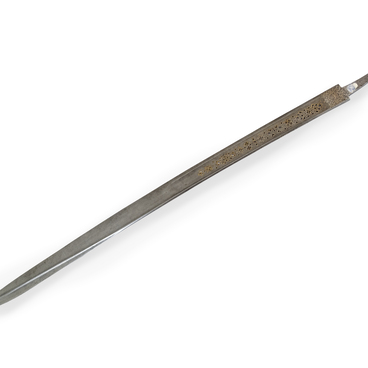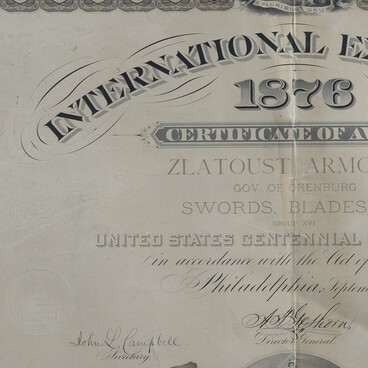The collection of the Zlatoust City Museum of Local Lore contains a hunting spear known in Russian as “rogatina”, which, in fact, is a sort of heavy spear. It was made by the craftsmen of the Zlatoust Arms Factory in the 19th century and is an example of a classic weapon for Russian hunting. A hunter with such a weapon was referred to in Russian as “rogatnik”, or “rogatennik”.
The striking steel tip was called “rozhon”. This led to a Russian saying “lezt na rozhon” (look for a fight, head for trouble). When forging the tip, the craftsman made four faces — two narrow and two wide ones. The tip ends with a conical bushing (“tuleya”) with a hole for the shaft. It was secured with two screws. The front side of the tuleya was decorated with an etched ornamented factory mark “Zlatoust Arms Factory 1887”.
In the manufacture of the spear, a wooden shaft (“iskepische”) was used. It was lacquered and bound in an ancient style with a fringed leather cord, which was firmly fixed with steel rivets at a specific interval. Five woven leather clutches were installed over the cord to fix the hunter’s hands. Traditionally, the shaft was made approximately equal to a person’s height.
With such a spear, hunters would go for a large and dangerous animal: a bear, a wild ox or a wild boar, since it was designed to inflict a wide and deep wound. When struck, it was usually held with both hands, but that was not done to make the strike heavier; on the contrary, the strike was to be of a rather moderate force. The technique was used to ensure a secure grip, so as not to release the shaft and to keep the beast at bay, and then rest the end of the shaft on the ground.
The striking steel tip was called “rozhon”. This led to a Russian saying “lezt na rozhon” (look for a fight, head for trouble). When forging the tip, the craftsman made four faces — two narrow and two wide ones. The tip ends with a conical bushing (“tuleya”) with a hole for the shaft. It was secured with two screws. The front side of the tuleya was decorated with an etched ornamented factory mark “Zlatoust Arms Factory 1887”.
In the manufacture of the spear, a wooden shaft (“iskepische”) was used. It was lacquered and bound in an ancient style with a fringed leather cord, which was firmly fixed with steel rivets at a specific interval. Five woven leather clutches were installed over the cord to fix the hunter’s hands. Traditionally, the shaft was made approximately equal to a person’s height.
With such a spear, hunters would go for a large and dangerous animal: a bear, a wild ox or a wild boar, since it was designed to inflict a wide and deep wound. When struck, it was usually held with both hands, but that was not done to make the strike heavier; on the contrary, the strike was to be of a rather moderate force. The technique was used to ensure a secure grip, so as not to release the shaft and to keep the beast at bay, and then rest the end of the shaft on the ground.



